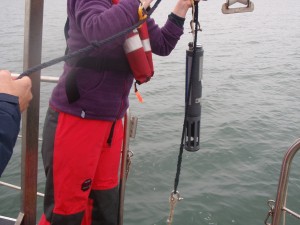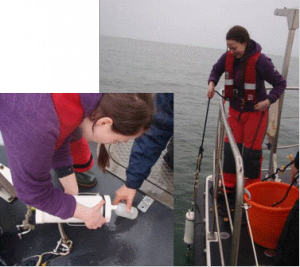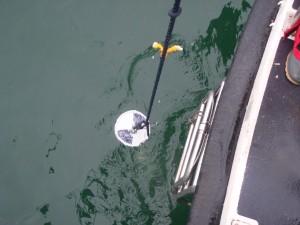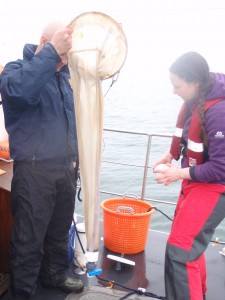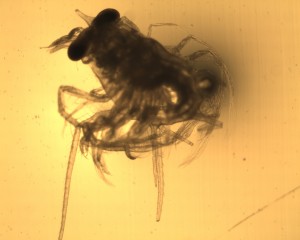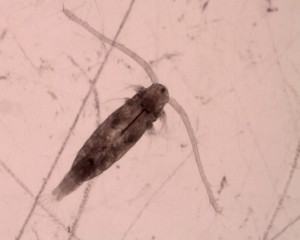
Last month I completed my third course during which I spent the day at the School of Nautical Studies at the City of Glasgow College hauling myself in and out of a life raft in a swimming pool whilst getting hosed with freezing cold water for my MCA personal survival techniques course! This means I am now able to go out on surveys and help collect zooplankton samples myself. I have already been lucky enough to get out on two surveys on the Solway Coast and one in the Firth of Forth.
For my first survey we had to travel to Kirkcudbright in Dumfries and Galloway to access the Solway Firth via the River Dee. It was a really clear day and we could see the hills of the Lake District and the Isle of Man in the distance. The sampling is quite a complicated process with lots of different equipment used to measure various different parameters. Sondes are used to measure features of water quality like temperature, salinity, pH, turbidity (how clear the water is), dissolved oxygen, chlorophyll fluorescence (measure of phytoplankton biomass).
A Lund tube is also used which takes a phytoplankton sample from 10m of the water column. Samples are also taken with a water sampler to measure nutrients, salinity, chlorophyll a and levels of trace metals at different depths. A secchie disk is used to determine the clarity of the water. It is measured by lowering the disc into the water and measuring the depth at which it can no longer be seen.
Finally, very fine meshed nets are used to collect samples of phytoplankton and zooplankton which we can count and identify back in the lab. After all the samples were collected we headed back towards the harbour spotting some grey seal pups along the way. The following week I got to go out on a second survey in the Firth of Forth on one of SEPA’s research boats “Kelpie.” On Thursday we were back in the Solway Firth where we were lucky to spot some otters and a very curious seal who watched us while we were carrying out our sampling.
When not out on survey I have been working in the lab on my ID skills trying to learn how to identify the ~200 species that are commonly found in samples around Scotland. Although it can be really hard with so many different species, with various life stages I am really enjoying the challenge. A nice find was a larval stage of Nephrops norvegicus which is only a couple of millimeters long and looks pretty different to the langoustine you are used to seeing on your dinner plate!
Something else that we found was an Acartia copepod with a filament of plastic found in its feeding appendages. Although this may not be usual behaviour and could be in response to being caught in the net it still highlights the huge problem of microplastics in the marine environment. Microplastics enter the sea in lots of different ways, some of which are quite easy to cut down like swapping your exfoliating face wash for one with natural particles in it. Others however are tougher to deal with like the synthetic fibres that come from your clothes in the washing machine. The impacts of plastics on large species like whales, turtles and seabirds are well documented but the extent of the impacts of microplastics, usually at the base of the food chain, are still poorly understood.

